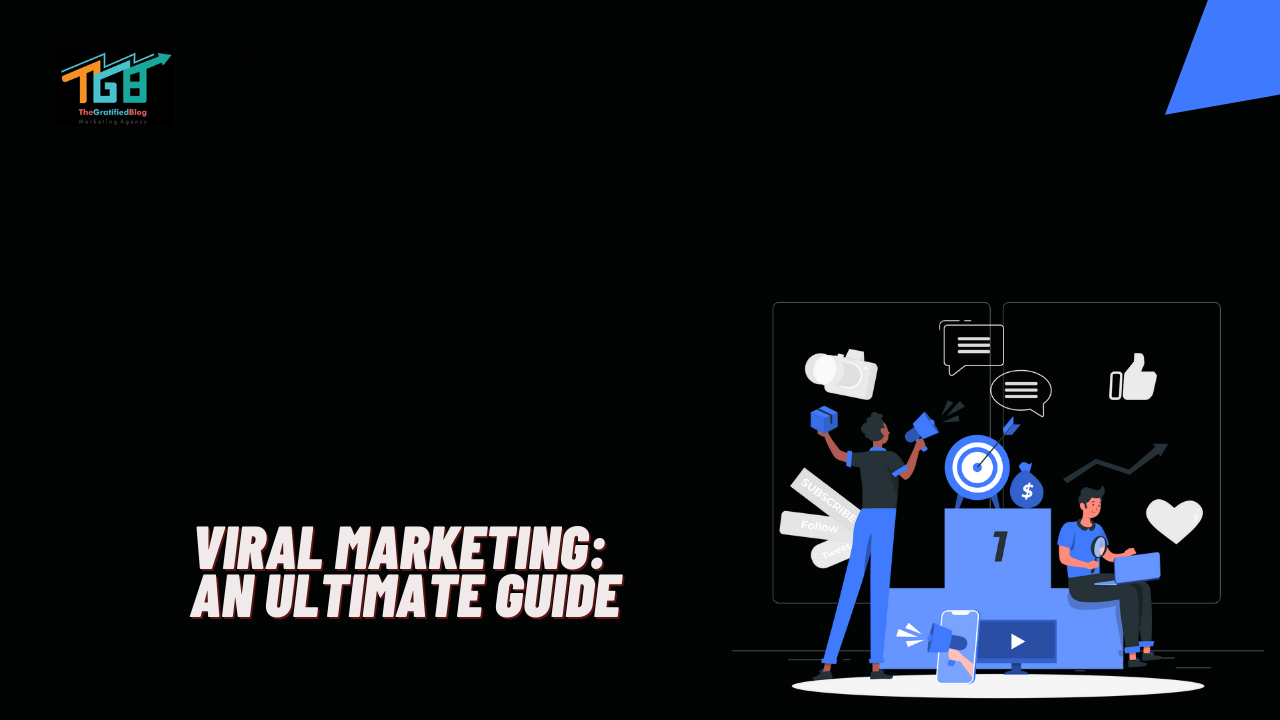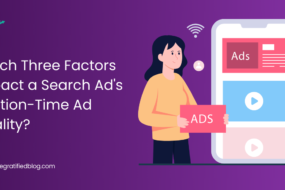
In today’s highly competitive business landscape, it can be challenging for companies to stand out and attract new customers. Traditional marketing methods like advertising and direct mail can be expensive and time-consuming, with no guarantee of success.
It is where viral marketing comes into play, providing an innovative and cost-effective way to promote a brand or product.
Yes, You heard it right – Viral Marketing
This blog post will explore viral marketing, its pros & cons, and some tips for creating a successful campaign.
What Is Viral Marketing?
Viral marketing is a technique that seeks to disseminate information about a product or service from individual to individual through verbal communication or sharing via the internet, email, and social media marketing.
According to Investopedia, viral marketing campaigns can increase brand awareness immensely.
Pros And Cons Of Viral Marketing
Pros
Businesses can leverage several benefits of viral marketing to achieve their marketing objectives. Let’s take a look at some of the most significant ones:
Raise Brand Image
It is an effective way to increase brand awareness. This strategy helps to expand your target audience to people who don’t need to learn your company exists but fall into the demographic you want to market to.
For example, if your company’s name is on everyone’s feed, people who need to become more familiar with your brand may research what you’re all about.
This exposure can lead to increased brand recognition and a better understanding of what the brand stands for.
Ask For Limited Monetary
Compared to other marketing methods, one of the significant advantages of viral marketing is that it can be a cost-effective way to promote a brand or product.
In this case, your users spread much of the campaign’s information, so you don’t need to use paid advertising or boosting to get more attention for your posts.
In contrast, other marketing methods require a limited budget to reach an audience and do not provide the same engagement and reach as viral marketing.
Not Invasive
Unlike traditional paid advertisements or commercials, viral marketing is not intrusive to the viewer due to its organic nature and the shares of people your audience knows.
People see viral content not because your brand promotes or boosts it but because everyone they know is talking about it.
For these reasons, people do not feel compelled to view an advertisement or specific content.
Having the option to view or click it without being pressured may make them more likely to interact with the content.
Cons
Lack Of Control
While viral marketing can have benefits, one major drawback is the need for more control over how the message spreads. Once a campaign goes viral, it can take on a life of its own, and harmful or unintended consequences can arise. Brands need to be prepared for potential backlash or misinterpretation of their message.
Difficulty In Predicting Success
Going viral is not guaranteed, and predicting which campaigns resonate with the audience can be challenging. Despite careful planning and execution, there is always an element of uncertainty in achieving viral success. This unpredictability can make it difficult for brands to rely solely on viral marketing as a consistent strategy.
Some Of The Best Viral Marketing Tips

Here are some viral marketing tips that can help create a successful campaign:
- Reflect Priorities: A significant challenge for brands is knowing and having clear goals and purposes for capturing everyone’s attention. It would be best to have an effective action plan for your viral campaigns, such as brand mentions or capturing your customers’ attention. What you want to accomplish and the purpose of running a campaign and making it viral. When you align your viral marketing efforts with your goals, you create something valuable and meaningful that will make an impact rather than hoping your next post sticks.
- Focus On Intended PerIt is critical to understanding your target audience, their interests, and where they spend their time. It will enable you to create content specific to their interests and preferences, increasing the likelihood that they will engage with your campaign and share it with their networks. Remember the various platforms and channels they use when developing target marketing strategies. For example, if your target audience is active on Instagram, you may want to focus on creating Instagram-specific content, such as images and videos. By targeting the appropriate audience, you can ensure that your viral marketing campaign reaches the right people and produces the desired results.
- Do Trend Jacking: Trendjacking is a viral marketing technique that uses a popular trend or news story to create relevant and timely content. It could be a popular meme or an event. Trendjacking can help your viral marketing campaign gain traction and reach a wider audience by tapping into what people are talking about and engaging with online. Furthermore, before Trend jacking, ensure the trending content is consistent with your brand’s image. Avoiding overly severe or sensitive topics like politics is also critical. It could be a popular meme or an event. Trendjacking can help your viral marketing campaign gain traction and reach a wider audience by tapping into what people are talking about and engaging with online. Furthermore, before Trend jacking, ensure the trending content is consistent with your brand’s image. Avoiding overly severe or sensitive topics like politics is also critical.
- Create Shareable Copy: It may seem obvious, but you must optimize your content for quick and easy sharing. To create shareable content, you must concentrate on creating engaging, memorable, and simple content to share. Videos, images, infographics, and interactive quizzes could all be included. Your content should be visually appealing and easy to consume, with a clear, easy-to-understand, and remembered message. For example, brainstorm some content and add CTA. Use FOMO in your content and share image content on Facebook or Instagram, as well as videos on TikTok and YouTube, among other platforms.
- Use Tags To Spread The Word: More social shares are associated with hashtags. Tapping a hashtag on any campaign is wise to make it more visible and memorable to your audience for awareness and easy sharing. Make a relevant hashtag and attach it to your post. It allows you to track the performance and effectiveness of your campaign in terms of shares and mentions. Creating a branded hashtag is also beneficial.
- Post Video Content: Creating videos is an effective way to engage your audience and increase the shareability of your viral marketing campaign. Because people are more likely to share videos than other types of content, video content is highly engaging and has the potential to go viral quickly. The general rule for going viral with a video is that the more shocking, memorable, or funny your video is, the more likely it is to go viral.
- Provide Valuable Service For Free: Offering a valuable product or service for free is an effective way to increase engagement and the likelihood that your marketing campaign will go viral. Who doesn’t appreciate getting something valuable for free? Free generally catches the attention of visitors. Eyeballs will then see the desirable items you are selling and increase their desire to buy! Sales opportunities, valuable email addresses, and advertising revenue are all brought by eyeballs. If you want to earn something, you must first pay for it.
- Do Reinforcement: Seize the audience’s attention with continuous engagement rather than relying on one-time viral messages. Take Progressive Insurance, and it’s an enduring commercial featuring Flo as an example of sustained impact. People might not have needed insurance when they first saw the Progressive advertisement. After seeing several versions of the same message, people will remember Progressive’s name when they need insurance. As a result, a series of viral messages will boost the effectiveness of your campaign.
Examples Of Viral Marketing
There are many examples of successful viral marketing campaigns that have gone viral and achieved significant success. Here are a few examples:
McDonald’s
One of our favorite viral marketing examples is McDonald’s “Can I get uhhhhhh” campaign, which featured a commercial that aired during The Big Game in 2022 (you know the one) and spawned a slew of viral Tweets.
This campaign took off by capitalizing on a relatable customer experience familiar to their target audience.

Liquid Death
One of the co-founders of the breakout water brand “Liquid Death” attributes their success to viral marketing; they launched a commercial on a shoestring budget before they had a product.
The commercial went viral, and their Facebook page quickly surpassed their major competitors in terms of followers.
Since then, they’ve continued to use viral marketing campaigns that rely on humor and shock.


Red Bull – Red Bull Gives You Wings
Red Bull’s iconic marketing slogan, “Red Bull gives you wings,” emphasizes the energy boost needed to tackle tasks or navigate through the day.
Like McDonald’s, Red Bull consistently incorporates this slogan in their marketing, often accompanied by commercials showcasing daring activities like skydiving.
This long-standing strategy has proven successful for over three decades, continuously reinforcing its brand identity.

The Future Of Viral Marketing
Emerging trends and technologies in viral marketing
Source: Youtube.com
- Augmented Reality (AR) and Virtual Reality (VR): Utilizing immersive experiences to enhance viral campaigns.
- Artificial Intelligence (AI): Leveraging AI to personalize and optimize viral marketing strategies.
- Live Streaming: Harnessing the power of live video streaming platforms for real-time engagement and viral potential.
- User-Generated Filters and Effects: Integrating branded filters and effects on social media platforms for user creativity and sharing.
The impact of user-generated content and social sharing
- Amplified Reach and Credibility: User-generated content (UGC) is more likely to be shared, leading to broader reach and increased authenticity.
- Influencer Collaborations: Partnering with influencers to create and promote user-generated content can amplify the viral potential of campaigns.
- User-Driven Campaigns: Involving users in creating and directing campaigns, fostering a sense of ownership, and encouraging organic sharing.
Integration of viral marketing with other marketing strategies
- Content Marketing Synergy: Aligning viral marketing campaigns with content marketing efforts to create a cohesive brand narrative and maximize impact.
- Social Media Integration: Seamless integration of viral marketing campaigns with social media platforms, leveraging the power of social sharing and engagement.
- Cross-Channel Promotion: Strategically promoting viral campaigns across multiple channels, such as email marketing, influencer collaborations, and traditional advertising.
- Personalization and Targeting: Utilizing data-driven insights to tailor viral marketing messages and optimize targeting for specific audience segments.
Conclusion
I hope you understand why viral marketing is crucial for business and how to leverage it effectively to reach a wider audience and generate buzz around your brand or product.
Whether you are an established business or a startup, these tips can help you maximize the potential of your viral marketing campaigns and drive significant growth and success for your business.
If you have any doubts about viral marketing or want to learn more about it, feel free to get in touch. We will be happy to help you.
Thanks for reading








No Comments